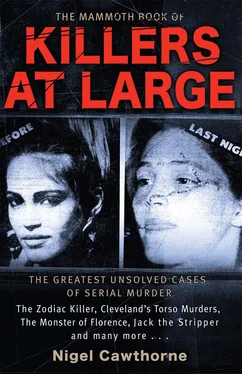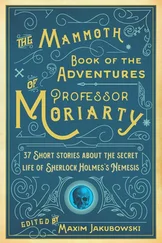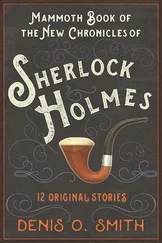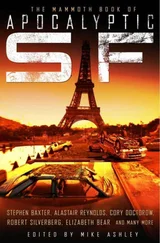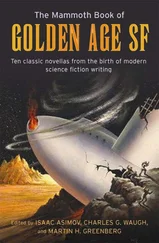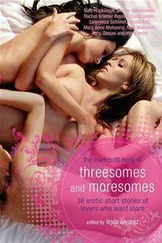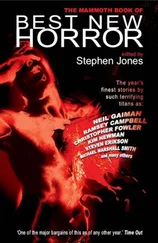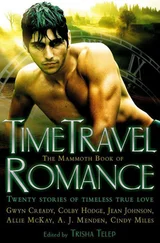A suave and a flashy dresser, he drove a Mercedes-Benz, fitting the profile. He was also self-employed, owning and running a women-only computer school called the Vision English Girls College from offices he rented in Pretoria. And, like many independent businessmen in South Africa, he owned a number of taxis. But things had been going badly. The college’s four employees had not been paid their salaries. He owed 50,000 Rand (£3,500) in rent and utility bills. The Mercedes was not registered in his name, but that of a black woman. Although he was paying the instalments on the car, he was 20,000 Rand (£1,400) behind on the payments. He had come to the attention of the police when a woman had contacted them, complaining that the suspect had offered her a job, but had then tried to rape her.
The suspect’s name was David Abraham Selepe. The problem was that he had fled his creditors two weeks before, supposedly going overseas on business. He had not gone that far. On 15 December, he was arrested trying to sell the Mercedes in the port of Maputo, the capital of Mozambique, 280 miles to the east. Detectives found newspaper clippings of the Cleveland killings in the boot. There were also footprints on the lid, suggesting that someone had been locked inside.
Returned to South Africa, he was questioned for the next four days. Apparently, he waived his right to legal representation. The police said that he confessed to the murder of 15 women in the Cleveland area—four more than they were investigating. They did not get around to questioning him about the women found in Pretoria West. While he was happy to make a verbal confession, the police said, he refused to sign a written confession.
The police also say that Selepe agreed to take them to the places where he had left the bodies. On 17 December, he took them to three places where bodies had been found. He then showed detectives the four previously unknown sites where he had said he had dumped bodies.
The following day, Selepe agreed to go to the place where Amanda Thethe’s body had been found on 6 August. Three officers investigating the case—Joseph du Toit, Timothy Mngomozulu and Felix Tiedt—accompanied him. From Geldenhuis station, they had to cross rough terrain so Selepe’s ankle chains were removed. The police said they did this to prevent Selepe from being injured—and later accuse them of brutality.
After Selepe had pointed out the place where Amanda Thethe’s body had been found, he told them that he had hidden her underwear in a plastic bag which had been shoved underneath some bushes nearby. His handcuffs were removed so that he could search for the bag. When he found the bag, Detective Tiedt bent down to recover it. He was then hit across the back with a stout branch, knocking him down. Detective Mngomozulu yelled, “Stop! Stop!” Then a gunshot rang out. Selepe fell to the ground. Bleeding profusely from a head wound, he was rushed to Johannesburg Hospital, where he died that evening.
The police claimed that this was a tragic accident that marred an otherwise brilliantly successful investigation. Since Brixton Murder and Robbery had taken over the investigation, only two months had passed before they identified the suspect and in another month they had arrested him, even though he had fled the country.
But there was a furore in the press. The Beeld said that three police officers should surely have been able to subdue a man only wielding a branch. And if they had to shoot to prevent him escaping, why had they not shot him in the legs? Other newspapers speculated that the police might have had ulterior motives and the Sowetan said that “an innocent man may have paid for the crimes of a monster who is still alive”.
On 20 December, the police were forced to issue a statement saying that Selepe had not admitted “in so many words” that he was the Cleveland strangler. However, he had “said things which strengthened our suspicion”. This cast doubt on Selepe’s so-called verbal confession. One of the Brixton police’s media officers, Lieutenant-Colonel Eugene Opperman, first told reporters that Selepe had been handcuffed at the time of the attack, and later changed the story. He was suspended in an effort to salvage the police’s image, which was further damaged when it came out that the police had failed to notify Selepe’s widow of her husband’s death. Linda Selepe had found out about it from neighbours who read about it in the papers. Although the couple had been estranged for more than a year, she said: “They killed the truth when they killed my husband. Had they brought him to court then, the South African public would have known the truth that David was not a killer.”
Minister of Safety and Security Sydney Mufamadi tried to retrieve the situation. He held a press conference, stating that Selepe’s death did not mean the case was now closed. Then he spent four hours with the relatives of the Cleveland victims, assuring them that both the murder of their loved ones and Selepe’s death would be thoroughly investigated.
During Selepe’s “confession”, detectives said that there were two men—accomplices—named “Tito” and “Mandl” they should talk to. This became the investigators’ top priority. They located a man they thought to be Tito. He was questioned at length and volunteered to provide blood and hair samples for forensic examination, but he was cleared of any connection to the murders. The man identified as Mandl had been in jail awaiting trial when the murders took place. Even so he was questioned, then dismissed from the enquiry.
Even though this line of enquiry drew a blank, the police continued to insist that David Selepe could be tied to at least six of the Cleveland victims. Blood said to be Selepe’s was found on one of the victims’ panties. And human blood, supposedly from one of the victims, was found in Selepe’s car. But the police would furnish no further details. They said that more evidence linked Selepe to four more victims, but, again, would not say what it was. This was dismissed as a feeble attempt to save face.
On 7 February 1995, the investigating officer in David Selepe’s death Colonel Adrian Eager delivered the post-mortem report to the Attorney General, after it had mysteriously gone missing for a week. The Attorney General stated that the investigation into the death of David Selepe had been thorough and that no one would be held accountable. An inquest in nearby Germiston into David Selepe’s death found, unsurprisingly, that no one could be held criminally responsible for his death. Sergeant Mngomozulu, the coroner said, had acted in self-defence.
However, public confidence was shaken when Colonel Eager testified that he was not even sure that “David Selepe” was the dead man’s real name. When the suspect had been convicted of fraud on 2 May 1985, he had been caught carrying false identity papers in the name of David Selepe and, as they did not know his real name, he had been charged and sentenced under that name. The records of the Department of Internal Affairs revealed that Selepe had first obtained legal identity papers under that name in May 1992. Between then and 21 June 1994, five sets of papers had been issued to him.
Despite public misgivings about the Selepe affair, it was generally thought that the Cleveland killings were over. However, on 13 February 1995, the body of a young black woman was discovered in the veldt near Village Deep, some six miles from Cleveland. She had been strangled with her own underwear and her clothes had been pushed up to above her waist. The police claimed it was a copycat.
At the end of February, four women told the police that a black man had approached them the previous October and November offering them jobs. The man was attractive with large eyes. He had expensive clothes and spoke Sotho rather than Zulu. He also claimed to be a vegetarian and drank milk. When the Cleveland murders came up in conversation, he made off, although he did not match the description of David Selepe.
Читать дальше
